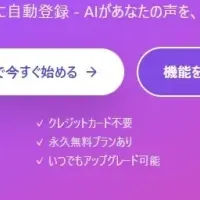
BlackRock Alerts Blockchain: Quantum Computing Poses Threats to Bitcoin and Ethereum
Quantum Computing Threatens Cryptography
In a significant warning for the blockchain ecosystem, BlackRock expressed concerns on May 9, 2025, regarding the risks quantum computing poses to critical cryptocurrencies like Bitcoin and Ethereum. This alert has sent ripples through the financial and tech industries, emphasizing how advancements in quantum technology could undermine the very foundations of cryptography that secure these digital assets.
BlackRock's announcement came in the wake of substantial achievements in quantum computing, notably Google's breakthrough with Google Willow in December 2024. This innovation has dramatically improved error reduction, making the potential for quantum capabilities more threatening to current cryptographic measures. Additionally, Microsoft launched Majorana 1 in February 2025, a groundbreaking chip designed to achieve one million qubits on a single platform. These advancements heighten the urgency for solutions that safeguard the integrity of blockchain technologies against quantum threats.
Shortly after BlackRock's warning, Google Quantum AI revealed an astonishing development: the capability to compromise widely used RSA-2048 encryption is now achievable with fewer than one million qubits. This further solidifies the fact that without adequate protective measures, existing blockchain systems could face catastrophic vulnerabilities by 2035.
Emergence of the Quantum Resistant Ledger (QRL)
In light of these developments, the Quantum Resistant Ledger, often referred to as QRL, stands out as the leading solution against the looming quantum threat. Established in 2018 and supported by the QRL Foundation, QRL is designed from the ground up with post-quantum security features, providing an essential defense mechanism for the blockchain of the future.
As a member of prominent organizations like the Public Key Infrastructure Consortium (PKIC) and the Linux Foundation's Post-Quantum Cryptography Alliance (PQCA), QRL is actively participating in the industry’s response to quantum computing risks. The collaboration with tech giants such as Google, Nvidia, and IBM highlights QRL's commitment to pioneering security in the blockchain landscape.
The excitement surrounding QRL is amplified with the upcoming Project Zond, which aims to create a post-quantum secure network capable of supporting Ethereum projects and the next generation of decentralized finance (DeFi) networks. The investment surge in quantum computing, which reached $1.25 billion in Q1 2025—more than double that of 2024—marks a significant shift from theoretical concepts to commercial applications, underscoring the urgency for quantum-resistant infrastructure.
Iain Wood, QRL's Operational Manager, articulates the prevailing sentiment: “It is now no longer controversial to say that all blockchains that exist by 2035 will have to be post-quantum secure.” He outlines that QRL's architecture is intrinsically designed with quantum security, a feature that could differentiate it from other blockchains which must adapt their existing structures to accommodate quantum risks.
In fact, as Wood notes, the vulnerabilities associated with cryptocurrencies were recognized long before Bitcoin ever came into existence, thanks to researchers like Peter Shor, who highlighted these cryptographic weaknesses nearly 15 years prior to Bitcoin's launch.
While many blockchain projects scramble to implement post-quantum adaptations, QRL is strategically positioned to lead the transition into this new era of security. Their confidence in providing a Quantum Safe Layer 1 network sets the stage for the future of decentralized applications designed not just for today but with an eye towards the challenges of tomorrow.
For those interested in learning more about the Quantum Resistant Ledger and Project Zond's progression, additional information can be found at theqrl.org. QRL is not just a step ahead; it’s gearing up to set the standard for blockchain technology's resilience against the quantum paradigm shift.
Topics Consumer Technology)










【About Using Articles】
You can freely use the title and article content by linking to the page where the article is posted.
※ Images cannot be used.
【About Links】
Links are free to use.